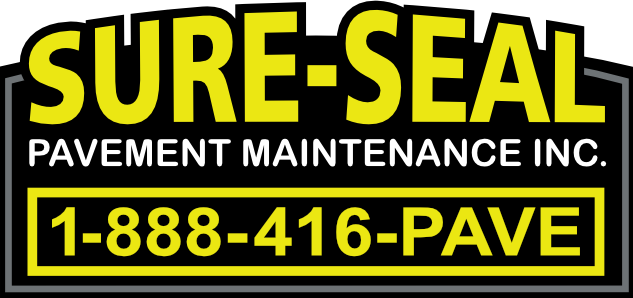 Potholes in driveways are a common problem for property owners. Any driveway can be affected, and if pothole repair isn’t performed promptly, many further problems can arise, including safety issues and possible legal troubles. Understanding how potholes form and what can be done to both prevent and fix them will save you time, money, and frustration.
Potholes in driveways are a common problem for property owners. Any driveway can be affected, and if pothole repair isn’t performed promptly, many further problems can arise, including safety issues and possible legal troubles. Understanding how potholes form and what can be done to both prevent and fix them will save you time, money, and frustration.
What are Potholes?
Potholes form when the pavement cannot sustain the weight and pressure being put on it. Potholes are typically the result of a long process involving water damage and lack of maintenance.
Potholes occur when water seeps into cracks in the pavement, eroding the ground beneath. Due to temperature drops, the ground expands, pushing the pavement up. When the temperature increases and the ground returns to its normal level, the pavement remains raised, leading to a gap between the pavement and the ground. When a car drives over the gap, the pavement cracks and a pothole forms.
Not only do potholes reflect poorly on your property, but they can cause accidents and open you up to legal issues. Pedestrians can trip and fall, drivers may swerve to avoid them and cause an accident, vehicles can sustain damage, and motorcyclists could be severely injured or even killed. In each of these cases, the property owner could be held liable.
How to Prevent Driveway Potholes
By performing proper maintenance on your driveway, potholes can be prevented from forming. It is much cheaper and easier to maintain a driveway while it’s in good condition than it is to fix it once potholes have formed.
Crack sealing can help prevent potholes from forming. With crack sealing, cracks or gaps in the pavement are sealed to prevent water and other foreign material from seeping into the pavement and eroding the ground beneath.
As cracks expand or contract in extreme temperature, crack sealing is typically performed in the spring or fall. This ensures that an appropriate amount of sealant is used. All cracks are cleaned and sealed, and some may require a backing rod depending on their size.
While hairline cracks cannot be individually sealed, a surface seal can be used over the pavement to fill them. This will prevent hairline cracks from becoming larger, more problematic cracks.
How to Repair Driveway Potholes
Once a pothole has formed, it has to be patched. Patching is the filling of potholes. There are several different types of patching that can be performed.
A full-depth patch is a permanent pothole repair, where the pavement and subbase surrounding the pothole are completely removed and rebuilt. Most often, after the pothole is excavated, it is filled with hot mix asphalt. The asphalt is then compacted to prevent further cracks or erosion. Infrared heat patching is a cheaper and quicker option comparable to full-depth patching.
Temporary patching, called surface patching, can also be performed on potholes. While this patching is not intended to be a permanent solution, it’s a quick option for property owners who need emergency repairs until further patching can be done. Small pavement repairs can be done using spray injection patching, which isn’t a permanent solution but will last longer than most temporary patching.
As the leading pavement maintenance contractor in the GTA, Sure-Seal Pavement Maintenance Inc. can take care of your pavement crack sealing using only the best equipment and materials. We use sealant that is formulated to stand up to everything Mother Nature throws at your pavement; from snow, to ice, to extreme cold and heavy rain—our sealant will stand up to the elements. Contact us today for more information on how we can seal cracks in your asphalt driveway or parking lot.
[banner_code]

